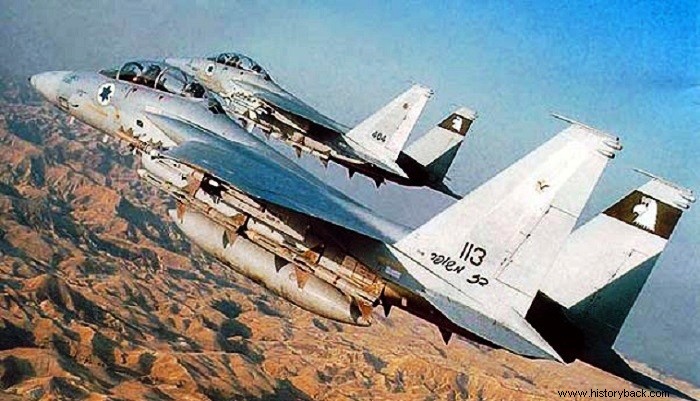
In 1982 Israel had invaded the territory of Lebanon. There his forces were also confronted by corresponding Syrian forces. So Israel decided to neutralize the threat of Syrian anti-aircraft missile arrays. The Soviets had given Syria many batteries. After one of their helicopters was shot down by Israeli F-16s, the Syrians deployed dozens of batteries in the Bekaa Valley.
The Israelis wanted to attack directly, but were prevented by the Americans fearing a Soviet reaction. On December 14, 1981, Israel officially annexed the Golan Heights, provoking an international reaction against it. Damascus described Israel's action as a "declaration of war".
On June 6, 1982, Israel invaded Lebanon while warning Syria not to intervene. Two days later, however, the Israelis found Syrian forces in front of them. Following this, the decision was taken to attack the Syrian arrays in the Bekaa Valley.
A sky full of aircraft...
Shortly after noon on June 9, 96 Israeli aircraft – F-15s and F-16s – took off. A second "package" of 92 aircraft followed. The Israeli aircraft carried in addition to their weaponry electronic warfare pods aimed at Syrian radars .
They knew the Syrian fighters were heading in from the ground. So "blinding" the radars was vital. The entire area was monitored by an E-2 Hawkeye "flying radar" aircraft and a Boeing 707 ECM electronic warfare aircraft, while the Israelis also used Mastiff and Scout drones.
Aerial trap
The Syrians had SA-2, SA-3 and SA-6 missiles while the fighters they dropped into battle were MiG-21, MiG-23 and Su-20. The Israelis first sent the Mastiff drone into the area causing the Syrian systems to activate their radars. As soon as the Syrian radars detected the drone they were in turn detected by the Scout which transmitted the signal to the E-2 and the Boeing 707.
As soon as the Syrians launched missiles against the drones Israeli F-4s of the second "package" attacked, under the cover of the first "package" of F-15s and F-16s. The F-4s hit the Syrian arrays with AGM-78 and AGM-45 anti-radar missiles. The Syrians meanwhile fired 57 SA-6 missiles to no avail.
Aerial battles
At the same time, about 100 Syrian fighters took off. With the use of electronic countermeasures, however, the Israelis interrupted the communications of the Syrian fighters with the ground radars. Directed by the E-2, the Israeli fighters attacked. The MiGs lacked proper sensors and were taken completely by surprise by the Israeli onslaught.
The Israelis fired first with AIM-7 Sparrow missiles from distances beyond visual contact and when they got close they also launched AIM-9 Sidewinders missiles. The result was disastrous for the Syrians who lost dozens of aircraft within minutes.
In total, in the short air battles of the next two days, the Syrians lost at least 82 aircraft – other sources say 86. Also, of their 30 missile arrays, 29 were destroyed. By 16.00 everything was over in the air, while on the ground the Israelis were destroying the Syrian 47th Armored Brigade.
Not without reason, the whole operation became known in Israel as "the turkey hunt in the Bekaa Valley" – paraphrasing the American victory over the Japanese in 1944. The Israelis had no casualties. One drone was shot down and two F-15s were damaged.
The Syrians turned to the Soviets for air cover while Moscow was officially announcing that "36 Israeli fighters, including modern F-15s and F-16s were shot down", causing global laughter.
In fact, the Soviet newspapers published an "interview" of a Syrian pilot who had "shot down" Israeli aircraft. In fact gloom prevailed in Moscow when it became fully realized that Soviet technology was far from Western.
